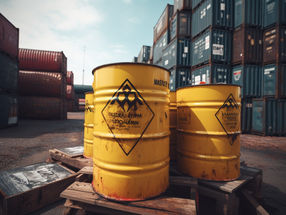Heavy metals in ceramic glaze can pose a risk to health
BfR recommends lower maximum levels for the migration of lead and cadmium from ceramic objects to foods
Coloured glazes of ceramic kitchenware may contain heavy metals like lead or cadmium. On contact with food, these toxic substances may be released from ceramic to varying degrees. The amounts of lead and cadmium which migrate from the ceramic to food is dependent not only the quality of the glaze but also more particularly on the temperature at which the ceramic was fired, the type of food and the duration of contact. The European Directive, which regulates the release of lead and cadmium from ceramics, is currently being reviewed. This prompted the Federal Institute for Risk Assessment (BfR) to re-examine the valid maximum levels. BfR President Professor Dr. Dr. Andreas Hensel comments, "Risks to health from extreme lead uptakes from food stored for longer periods in lead-permeable ceramic containers cannot be completely ruled out today either." Even if the current provisions are complied with, there may be circumstances under which heavy metals may be released into food at levels which, particularly in the case of lead, can no longer be considered safe. BfR, therefore, recommends lowering the statutory maximum levels for the release of lead and cadmium from ceramic objects. Consumers should not store foods for longer periods in ceramic containers.
Up to 4 milligram lead per litre (mg/l) may be released from ceramic containers which make full use of the permitted release level for lead. Depending on the calculation model, lead uptake may considerably exceed the provisional tolerable weekly intake (PTWI) of 0.025 mg per kilogram body weight and week derived by the World Health Organisation (WHO). "Even if it can be assumed that stipulated levels are not exceeded to this high degree every day or lifelong, these are additional and, above all, avoidable exposures", commented Hensel.
According to BfR the same applies to the heavy metal cadmium whereby the PTWI of 0.007 mg/kg body weight and week is exceeded to a far lower degree. Nevertheless, there are groups of persons who almost reach the limit value for cadmium because of their eating habits and lifestyle. Any additional intake, like for instance from ceramic kitchenware, should, therefore, be avoided. The Institute comes to the conclusion that if the current maximum levels are maintained for the migration of lead and cadmium from ceramic objects to foods intake levels may be reached in individual cases which, especially in the case of lead, can no longer be considered safe. It is not clear how many and how often consumers are affected by high heavy metal intakes of this kind. Particularly with regard to the sensitivity of children, BfR recommends lowering the maximum levels for the release of lead and cadmium from ceramics.
Most read news
Other news from the department politics & laws

Get the chemical industry in your inbox
By submitting this form you agree that LUMITOS AG will send you the newsletter(s) selected above by email. Your data will not be passed on to third parties. Your data will be stored and processed in accordance with our data protection regulations. LUMITOS may contact you by email for the purpose of advertising or market and opinion surveys. You can revoke your consent at any time without giving reasons to LUMITOS AG, Ernst-Augustin-Str. 2, 12489 Berlin, Germany or by e-mail at revoke@lumitos.com with effect for the future. In addition, each email contains a link to unsubscribe from the corresponding newsletter.




























































